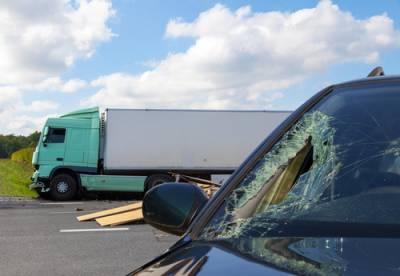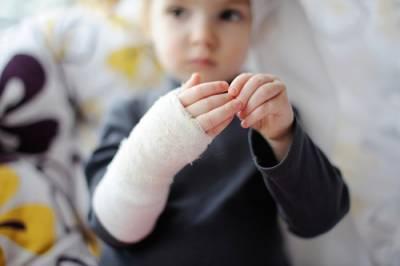
 With a family and career of your own, it may be challenging to take care of your elderly parent like they took care of you growing up. Additionally, elders can have health concerns that are difficult to manage in a home environment without hiring a nurse or other medical aid. Nursing homes are supposed to be safe places where older people can get the care they need around the clock. Unfortunately, nursing home abuse and neglect is a potential issue that can occur, and it is important to be aware of these risks when your loved one is in someone else’s care.
With a family and career of your own, it may be challenging to take care of your elderly parent like they took care of you growing up. Additionally, elders can have health concerns that are difficult to manage in a home environment without hiring a nurse or other medical aid. Nursing homes are supposed to be safe places where older people can get the care they need around the clock. Unfortunately, nursing home abuse and neglect is a potential issue that can occur, and it is important to be aware of these risks when your loved one is in someone else’s care.
The mistreatment of elders is a serious problem. It is estimated that upwards of two million seniors over the age of 65 have faced some sort of abuse or neglect in the United States. Those odds are concerning if you have an older loved one in the care of someone else, so it is important to be aware of the risks that your family member might be abused or neglected. Some common nursing home negligence issues include:
 When you visit the home of a family member or friend or enter a business, safety may not cross your mind. Under reasonable circumstances, people have the right to believe that a home, apartment, store, or restaurant will not cause them harm. In fact, it is the responsibility of people who own, manage, or occupy a property to maintain it properly to prevent accidents. When a person is injured on another person’s property, they may be able to recover compensation through a premises liability lawsuit.
When you visit the home of a family member or friend or enter a business, safety may not cross your mind. Under reasonable circumstances, people have the right to believe that a home, apartment, store, or restaurant will not cause them harm. In fact, it is the responsibility of people who own, manage, or occupy a property to maintain it properly to prevent accidents. When a person is injured on another person’s property, they may be able to recover compensation through a premises liability lawsuit.
If you have been injured on someone else’s property, you may be eligible for compensation for medical bills, lost wages, and pain and suffering. If the property owner was negligent and failed to maintain the property to a reasonable standard, then they may be held liable.
 Workers' compensation exists to protect workers after an accident, or circumstance, that causes them to be injured and prevents them from returning to work temporarily or permanently. In the case of an injury which occurred while an employee was working or because of their work, an employer’s workers’ compensation insurance pays for any medical bills and provides compensation for lost wages due to disability.
Workers' compensation exists to protect workers after an accident, or circumstance, that causes them to be injured and prevents them from returning to work temporarily or permanently. In the case of an injury which occurred while an employee was working or because of their work, an employer’s workers’ compensation insurance pays for any medical bills and provides compensation for lost wages due to disability.
In 2017, the Bureau of Labor Statistics reported 2.8 million injuries by private employees that did not result in death. Common industries with a high volume of workers’ compensation claims are construction, labor, and retail. While many injuries fell into the expected categories, such as slip and fall accidents, there were a number of unusual claims in which workers received benefits, including:
 The majority of fatalities caused by a semi-truck accident are others in passenger vehicles, pedestrians, and bicyclists. In 2017, according to the U.S. Department of Transportation, a total of 4,102 people died as a result of a truck accident. Almost 70 percent of those deaths were passengers or drivers in cars.
The majority of fatalities caused by a semi-truck accident are others in passenger vehicles, pedestrians, and bicyclists. In 2017, according to the U.S. Department of Transportation, a total of 4,102 people died as a result of a truck accident. Almost 70 percent of those deaths were passengers or drivers in cars.
Since 2009, the number of passenger deaths caused by truck accidents has increased by 30 percent. However, 2009 also had the lowest amount of passenger deaths since 1975. The 2000s brought a steady decrease in fatalities, until 2010, when the number of deaths began increasing again.
There is much more into putting a semi-truck on the road than a passenger vehicle. Some of the most common reasons for truck accidents are equipment failure, poor vehicle maintenance, and the improper loading of cargo. Driver error, negligence, and poor weather conditions are also top reasons for accidents involving a semi-truck. Truck drivers can be pressured to be as productive as possible, thus skipping necessary rest. Here are some examples where a truck driver, or company, was found liable for an accident.
 Every teenager looks forward to the day they can have the independence of driving. Teenagers as young as fifteen can begin learning how to drive. Once the learning requirements are met, and the child reaches sixteen years old, they can test for an initial license. This license has restrictions like the number of passengers, and more strict mobile device usage while being the wheel. With up to thirty percent of motor vehicle accident costs are attested to teenagers and young adults, there is a chance you may get into an accident with someone driving as young as sixteen years old.
Every teenager looks forward to the day they can have the independence of driving. Teenagers as young as fifteen can begin learning how to drive. Once the learning requirements are met, and the child reaches sixteen years old, they can test for an initial license. This license has restrictions like the number of passengers, and more strict mobile device usage while being the wheel. With up to thirty percent of motor vehicle accident costs are attested to teenagers and young adults, there is a chance you may get into an accident with someone driving as young as sixteen years old.
Anyone who operates a vehicle legally had to work to get a driver’s license. After obtaining a learner’s permit, the teenager must practice driving with a licensed adult for fifty hours. Ten of those hours must be done at night. Once the minimum of driving hours has been reached, and the permit has been active for at least nine months, a sixteen-year-old may receive an initial drivers license. A full license can be applied for between the ages of eighteen and twenty.
 Like any professional, you trust that doctors, nurses, hospitals, and other healthcare professionals will do the right thing on behalf of your health and wellness. With years of training, we expect a high level of expertise and dedication in the field of medicine. Sadly, when doctors make mistakes or are negligent, it is the patient and their loved ones that suffer because of medical malpractice - and they must often fight just to obtain the compensation that they deserve.
Like any professional, you trust that doctors, nurses, hospitals, and other healthcare professionals will do the right thing on behalf of your health and wellness. With years of training, we expect a high level of expertise and dedication in the field of medicine. Sadly, when doctors make mistakes or are negligent, it is the patient and their loved ones that suffer because of medical malpractice - and they must often fight just to obtain the compensation that they deserve.
Medical malpractice is when a health care provider strays from professional standards. Any health professional, institution, or service can be faced with malpractice on the grounds that the minimum standard of medical care was not reasonably fulfilled.
Medical errors take up to 160,000 lives a year, according to Johns Hopkins University. Many people are afraid to come forward when something does not feel right with the medical care they are receiving. It is difficult to prove medical malpractice, and unfortunately, errors in the medical world do not usually reach the light until they are brought to trial.
 If you work in the labor or trucking industries, you may be well aware of workers’ compensation. According to the U.S. Department of Labor, Bureau of Labor Statistics, truck drivers and tractor trailer operators made up 5.4% of all private industry reports of injuries. Non-construction laborers make up the highest percentage of 7.3%. Other notable industries are janitorial, nursing assistants, and retail workers.
If you work in the labor or trucking industries, you may be well aware of workers’ compensation. According to the U.S. Department of Labor, Bureau of Labor Statistics, truck drivers and tractor trailer operators made up 5.4% of all private industry reports of injuries. Non-construction laborers make up the highest percentage of 7.3%. Other notable industries are janitorial, nursing assistants, and retail workers.
Every employer is required to have workers’ compensation insurance in the event that someone gets hurt at work or sustains an injury related to working conditions. Workers’ compensation can assist people after an injury by providing:
A family member or friend in your industry may have even needed workers’ compensation benefits, but when it happens to you, an important question to ask is: do you hire a workers’ compensation attorney?
 No parent ever expects that a product or toy they purchase could injure or kill the child for which it is intended. Yet, every year, there are between 400 and 450 recalls of products in the interest of safety. In 2017, there were 251,700 injuries related to toys alone, as reported by emergency rooms to the U.S. Consumer Product Safety Commission. Kids getting minor injuries related to playtime is unavoidable, but the negligence of a company and serious injury or death can be avoided.
No parent ever expects that a product or toy they purchase could injure or kill the child for which it is intended. Yet, every year, there are between 400 and 450 recalls of products in the interest of safety. In 2017, there were 251,700 injuries related to toys alone, as reported by emergency rooms to the U.S. Consumer Product Safety Commission. Kids getting minor injuries related to playtime is unavoidable, but the negligence of a company and serious injury or death can be avoided.
When a faulty product is discovered, it is the company’s job to report the defect to the government. You may recall seeing flyers around your regular retailer's about recalls. When a product is recalled, it is completely up to the consumer to follow through with reaching out to the company. Recalls are also listed on the U.S. Consumer Product Safety Commission website, where company contact information and remedies to the defect are also available. If a consumer ignores or is unaware of a recall, he or she is potentially putting themselves or loved ones in danger.
 The holidays are supposed to be a time of joy and celebration, and the last thing on your mind should be a personal injury lawsuit. Unfortunately, accidents do happen, even during the most wonderful time of the year. Tripping or falling over Christmas lights of your own doing is one thing, but what if your injury is caused by the negligence of someone else?
The holidays are supposed to be a time of joy and celebration, and the last thing on your mind should be a personal injury lawsuit. Unfortunately, accidents do happen, even during the most wonderful time of the year. Tripping or falling over Christmas lights of your own doing is one thing, but what if your injury is caused by the negligence of someone else?
Negligence is when a person could have done something to prevent an unfortunate outcome but did not, either due to ignorance or laziness. For example, if a store owner refuses to clean up a spill and someone ends up getting hurt, the injured party is considered a victim of negligence.
During 2011 through 2015, the US Consumer Product Safety Commission reported over 1,700 Christmas related injuries in 100 hospitals. Here are a collection of those common Christmas injuries.
 The decision to place an elderly parent or another family member in a nursing home is often made with best intentions. Common tasks may become impossible for your elderly loved one to complete, and a nursing home can provide around-the-clock care to make them more comfortable. You may feel guilty for not being able to provide the care yourself, but nursing homes have health professionals that are experienced in the needs of elderly people.
The decision to place an elderly parent or another family member in a nursing home is often made with best intentions. Common tasks may become impossible for your elderly loved one to complete, and a nursing home can provide around-the-clock care to make them more comfortable. You may feel guilty for not being able to provide the care yourself, but nursing homes have health professionals that are experienced in the needs of elderly people.
You want to think that your loved one is safe in your nursing home of choice, but one out of ten elders experience some form of neglect in a nursing home.
There are four main types of neglect that are seen in a nursing home: